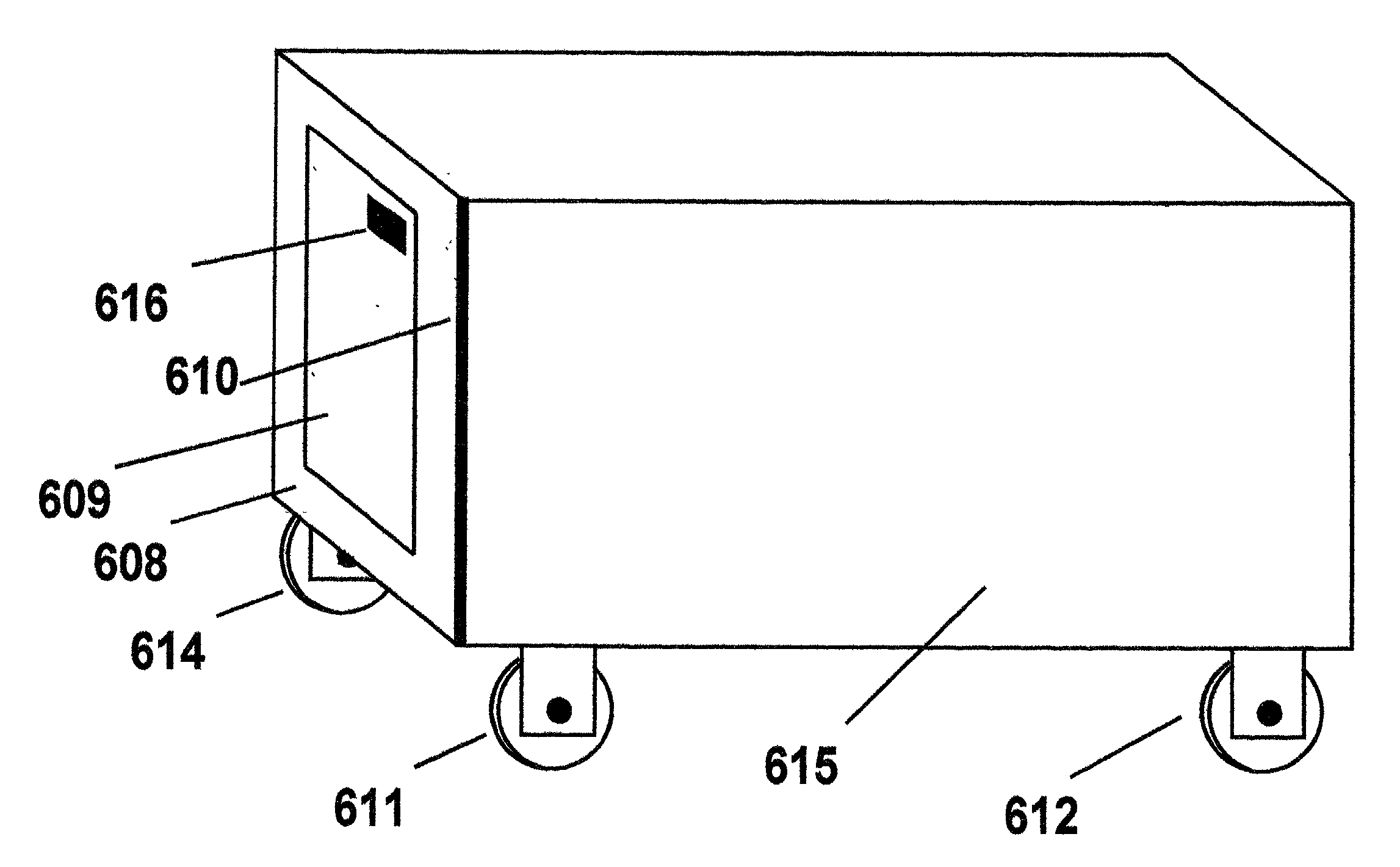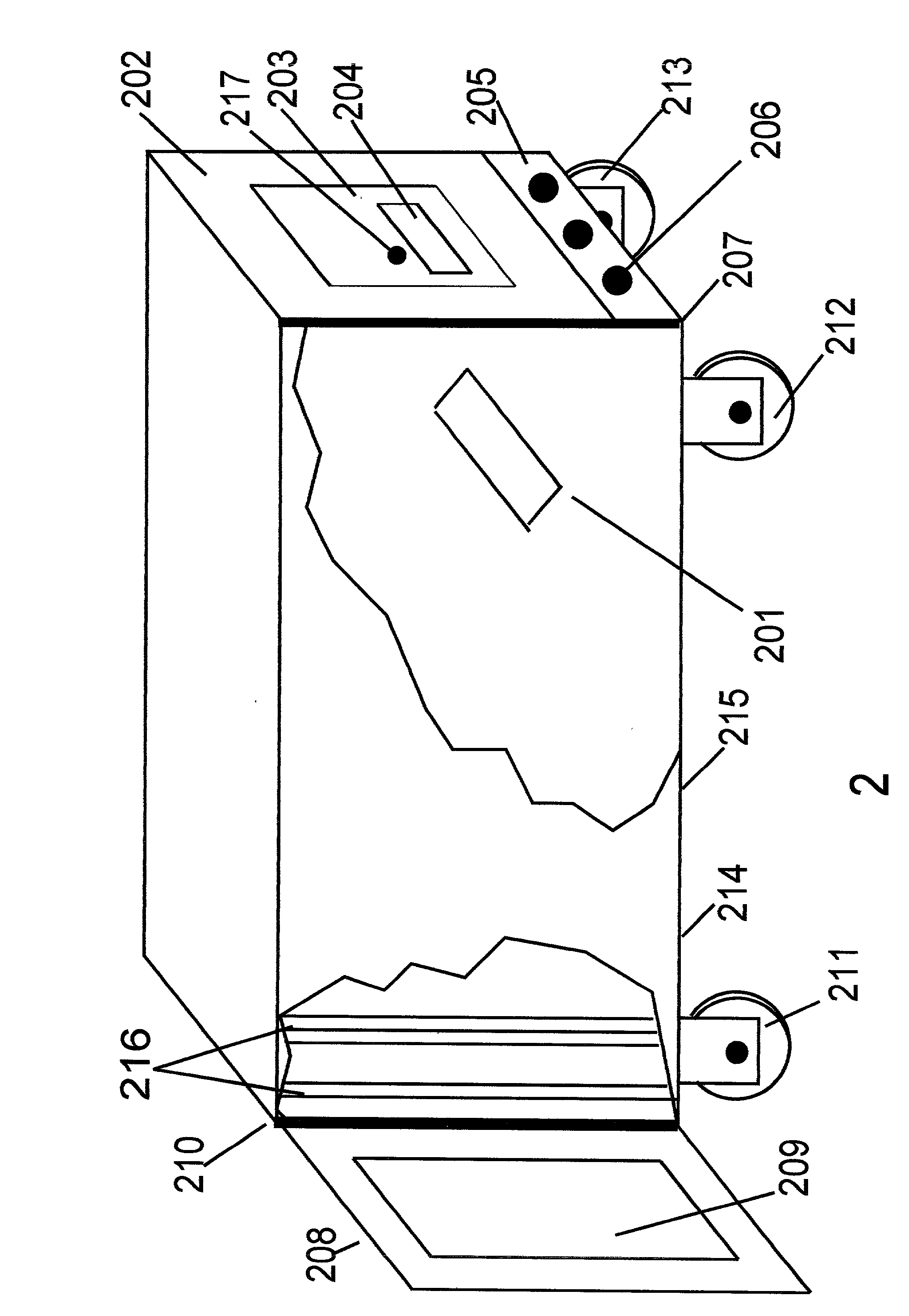Acoustical noise reducing enclosure for electrical and electronic devices
- Summary
- Abstract
- Description
- Claims
- Application Information
AI Technical Summary
Benefits of technology
Problems solved by technology
Method used
Image
Examples
Embodiment Construction
[0039] The cabinet 111 in the preferred embodiment has a height of 24.75 inches, a depth of 33 inches, and a width of 22.5 inches and is made of plywood or medium density fiber-board. It will house equipment with a maximum height of 21 inches or 12 rack units with a maximum equipment depth of 24 inches. The interior walls are lined with reticulated foam for sound absorption and the air intake port 201 has an electrostatic filter 702 fitted to it to minimize dust being sucked into the cabinet. Mounted above the air intake port 202 is a sheet of acoustic absorption material 701, such as Owens-Corning 703, which is larger than the port opening to reduce sound transmission out of that port.
[0040] Equipment is mounted in the cabinet on rails 216 located behind and to the left and right of the front door. These rails are mounted to the cabinet on vibration absorbers such as those manufactured by Sorbothane.
[0041] The exhaust / sound trap assembly 203 uses two 4.5 inch boxer fans operated at...
PUM
 Login to View More
Login to View More Abstract
Description
Claims
Application Information
 Login to View More
Login to View More - R&D
- Intellectual Property
- Life Sciences
- Materials
- Tech Scout
- Unparalleled Data Quality
- Higher Quality Content
- 60% Fewer Hallucinations
Browse by: Latest US Patents, China's latest patents, Technical Efficacy Thesaurus, Application Domain, Technology Topic, Popular Technical Reports.
© 2025 PatSnap. All rights reserved.Legal|Privacy policy|Modern Slavery Act Transparency Statement|Sitemap|About US| Contact US: help@patsnap.com



